Case Studies
Trust and Worth
Our Clients
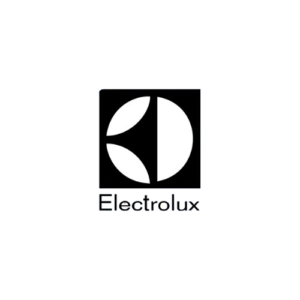



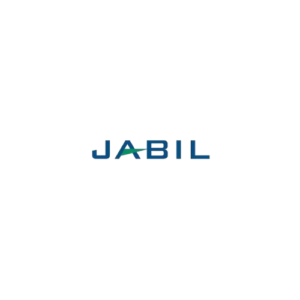
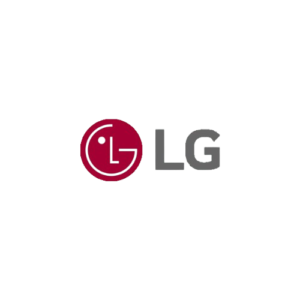
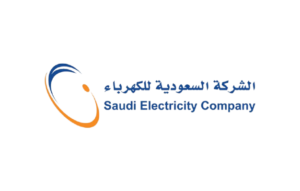
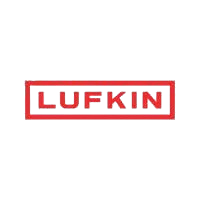

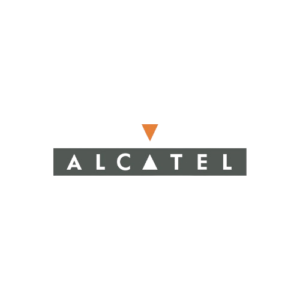
Case Studies
Overview
Our clients represent the top achievers within their respective industries and sectors. PIE Group provides specialized knowledge and innovative solutions to driven executives aiming to acquire or maintain a competitive edge. We excel in various industries, including but not limited to accommodations, oil and gas, power generation, consumer electronics, white goods, aerospace, manufacturing, professional services, and more. Explore our case studies to see how we have successfully supported clients across these industries, delivering measurable results and driving operational excellence.
Case Studies
Oil & Gas
THE CLIENT
A prominent Oil and Gas company, known for producing pumping units, sucker rods, downhole pumps, accessories, and automation, was acquired by another major player. This integration revealed challenges in safety, quality, costs, and product delivery, especially when compared to more efficient competitors. PIE Group leaders responded by assessing the entire supply chain and executing a successful transformation. For more insights on how we addressed these challenges and drove improvements, explore our case studies.
THE CHALLENGE
Oil and Gas
Integrating the workflows, processes, and procedures of the two organizations across various departments presents significant challenges. We encountered two additional obstacles, as collaboration with different teams for each project necessitated starting anew repeatedly.
The Risks of Merging Operations After an Acquisition
The initial phase of merging operations following an acquisition can be precarious, almost like balancing on a tightrope. A single misstep could jeopardize the entire integration process, especially when each company sticks to its established methods. Furthermore, personnel on both sides may believe their approach is superior. If, on the other hand, the acquiring firm imposes its processes in an authoritarian manner, it risks causing discord, fostering resentment, and potentially triggering employee turnover. Consequently, these dynamics significantly complicate the process of merging two companies.
PIE Group’s Engagement in the Integration Process
PIE Group was engaged to align the workflows of a major player in the energy transportation sector with those of a smaller, recently acquired company, with which we had prior collaboration.
Key Areas of Assessment for Successful Integration
The assessment conducted by PIE Group focused on six key areas: commercial operations, engineering operations, manufacturing operations, product sourcing and supply chain, equipment efficiencies, and product distribution. To see how PIE Group successfully navigated these integration challenges, explore our case studies for more details on our approach and results.
VALUE STREAM PROCESS / SOLUTION
We conducted a thorough analysis of their processes through comprehensive Value Stream Mapping, researched industry best practices, leveraged our expertise in efficiency, and developed workflows that integrate the processes of both companies
This resulted in a set of recommendations aimed at effectively merging their operations. Utilizing a process mapping technique known as a "brown paper" exercise, we facilitated a WORKOUT SESSION where participants gathered in person
During this session, we employed a large map to visually represent each business process as it currently exists and to envision its potential integration. This approach involved displaying the map in a conference room, allowing participants to contribute and collaboratively design a new, unified process that is clearly visible to all. This method provides a transparent overview of existing strengths, areas for improvement, and the anticipated outcomes
Case Studies
OUR APPROACH
Initiating each project from a clean slate was essential. As part of our review of six distinct areas, ranging from commercial operations to product distribution, we encountered various leaders overseeing these initiatives. Although the leaders of the company remained consistent and highly supportive of our endeavors, we found ourselves starting fresh with the teams involved. To address this, we kicked off each project with a workshop to present our concepts and methodologies. Moreover, we made sure all participants were familiarized with process mapping before actively engaging in the work. This structured approach was consistently applied across all six areas, ensuring uniformity and clarity throughout the process. To learn more about our approach and results, check out our case studies for detailed examples of how we successfully managed these projects.
RESULTS
The workflows, processes, and procedures of two companies were integrated across six business areas to create a unified operation. For a deeper understanding of how we achieved this integration, explore our case studies, which highlight the successful strategies and outcomes we delivered.
CONCLUSION
The ethos of continuous improvement, which we apply to all our projects, was evident in this instance as well. Moreover, there was a unified effort toward common objectives among all team members. For more examples of our approach and its impact, explore our case studies to see how we deliver measurable results across various industries.
Of six projects with global teams, only a few expressed any concerns, which is quite rare. Typically, integrating processes in such contexts challenges established work habits, often leading to discomfort or resistance among employees who have been accustomed to their routines for years.
However, this was not the case here. Instead, employees actively participated in the process and expressed optimism about the future of their integrated organization. As a result, this engagement is intended to be long-term.
BUSINESS KPI’S ACCOMPLISHED
Case Studies
Product Manufacturing Case
THE CLIENT
A prominent US-based corporation with a global presence specializes in intrusion alarm systems, fire protection, access control, video surveillance, explosives and drug detection, and key control services.
THE CHALLENGE
Product Manufacturing
Sales grew at 25% annually, but the company faced challenges with low contribution margins and rising customer expectations for faster turnaround times. This made managing increased demand while controlling manufacturing costs difficult. To address the lack of flexibility in the production process, the company kept large, costly inventories of work-in-progress and finished goods from global suppliers. Despite these efforts, daily operational demands hindered progress.
OUR APPROACH
We began by collaborating with the client’s frontline personnel to analyze their supply chain and supplier production workflows. A comprehensive review revealed significant challenges, including production bottlenecks and non-value-added activities.
Identifying Key Challenges in Design and Costs
Product design constraints, high material costs, and multiple suppliers for the same product family were increasing overall product costs, affecting contribution margins.
Analyzing Production, Material, and Logistics Costs
We examined product designs, supplier methods, material expenses, and logistics. Many suppliers faced a backlog of 10,000 man-hours and rising preventive maintenance efforts. Supervisory staff lacked a visual management system and discipline for implementation.
Overcoming Engineering and Communication Challenges
Engineering teams struggled to support design and production, hindering quick responses to customer requests. Poor interdepartmental communication made coordination difficult. To address this, we outsourced redesign efforts to an engineering services provider in Asia, where most suppliers were located.
Streamlining the Product Assembly Area
The assembly area faced a bottleneck. We worked with suppliers to assess workflows and developed a prototype that improved cycle times. In three weeks, the assembly area began pulling products faster than the manufacturing lines.
Implementing Prototyping and Optimizing Production Lines
We introduced similar initiatives across two assembly lines. By optimizing space and applying cellular manufacturing, Kanban, and rapid changeover methods, we eliminated five-day inventories. A previously cluttered sub-assembly zone was transformed into a modern production cell, restoring control over the workflow.
Addressing the Engineering Backlog
The engineering backlog was imbalanced, with one person responsible for 56% of the work. We identified and removed non-value-added activities and created a computer-based management system to streamline task execution. By the project’s end, backlog man-hours decreased, and weekly planned objective achievement rose from 44% to 96%.
Final Outcomes and Sustainable Improvements
The backlog reduction resulted from eliminating outdated tasks and enhancing work efficiency using third-party resources. We also restructured the engineering department to better support production and customer service.
PERFORMANCE RESULTS
Case Studies
CONCLUSION
Our team worked with personnel across all levels and departments, along with global suppliers, to implement organizational, attitudinal, and physical changes. A visual management system provided results through weekly progress updates aligned with set objectives. This approach encouraged ownership of the changes, keeping continuous improvement integral to the company culture.
Case study
Improvement of Operational Efficiency Case
THE CLIENT
A leading healthcare device manufacturer based in the United States, recognized for its high production volume and global reach, whose products impact the lives of millions worldwide
THE CHALLENGE
Product Manufacturing
The client engaged PIE Group to improve production processes for fluid supply bags used in patient health treatments. The supply chain faced critical operational issues that slowed throughput rates. PIE Group’s consultants collaborated with the client for several months, increasing annual throughput by 40%. The client aimed for lasting operational improvements to resolve production challenges.
However, the initial collaboration was too short to create lasting cultural change. As a result, the client experienced a 15% annual decline in throughput due to longer process durations. Manufacturing teams struggled to maintain optimal efficiency, preventing consistent high throughput despite previous improvements.
Quality challenges arose from multiple operational shortcomings. Engineering and operations teams failed to identify and evaluate defects, leading to reject rates beyond acceptable limits.
The client also faced maintenance issues due to an inadequate management system. Stakeholders had trouble identifying necessary spare parts and resolving asset problems due to the lack of organized problem-solving and escalation protocols. Technicians lacked a clear equipment hierarchy, delaying priority tasks. Coordination between Maintenance Planners and Production Schedulers was poor. Project managers also ignored the skill levels of technicians when assigning tasks, resulting in execution difficulties.
Case Studies
SOLUTIONS
The PIE Group focused on creating a structured maintenance escalation process, which was previously lacking. Technicians approached tasks without clear strategy, resulting in ineffective solutions or abandoned efforts. Our consultants worked with the team to establish formal escalation protocols that prioritized quick action and high-quality results.
PIE also examined technician deployment, identifying workforce management practices as a key barrier to maintenance efficiency. The client relied on a mix of maintenance generalists and engineering specialists.
Our consultants found disparities in technician skills, with some specialists excelling while others compromised equipment quality. PIE collaborated with stakeholders to improve skills and provide the necessary knowledge for effective maintenance.
PIE also addressed inefficient batch changeovers, improving scheduling and coordination during planned downtime. Consultants implemented a model to speed up pre-scheduled maintenance during these periods.
PIE enhanced quality assurance by including the engineering division, enabling the quality team to address underlying causes of defects. This collaboration reduced defects by 25-30%.
PERFORMANCE RESULTS
Case Studies
CONCLUSION
The improvement implemented had a significant effect on the organization. The reductions in CIP time and defects, coupled with enhanced maintenance procedures, enabled the client to reach a throughput rate of 30 million units within the first few weeks of engagement, representing a 55 percent increase compared to the figures prior to PIE Group’s involvement. The client concluded the fiscal year in alignment with its volume targets and is poised to maintain this level of productivity
To discover more about our initiatives and how our team can help your organization thrive, contact PIE Group today
Enhancing the Efficiency of Power Generation Plants and Prolonging the Lifespan of Equipment Case
CLIENTS
Power generation facilities in the Middle East, including Saudi Arabia, Kuwait, Oman, the United Arab Emirates, Iraq, and Jordan, as well as in Africa, comprising Egypt, Algeria, Morocco, Tunisia, South Africa, and Nigeria, are predominantly owned by government or semi-government entities
Case Studies
CHALLENGES
Numerous nations in Asia, the Middle East, and Africa are experiencing power shortages attributed to insufficient power generation facilities and inefficiencies in output. A significant obstacle to enhancing the capacity of existing plants or modernizing outdated equipment is the lack of financial resources. To improve efficiency and extend the lifespan of equipment, comprehensive assessments are necessary, along with collaboration with power generation manufacturers to develop cost-effective solutions. Several ongoing challenges include:
- Rising frequency of equipment malfunctions, failure to achieve targeted power generation objectives
- Spare parts and technical support availability
- Insufficient preparedness for annual equipment maintenance frequency
- Deficiencies in power plant operations
Delays in resolving issues attributed to inadequate technical expertise among employees and the absence of a structured problem-solving approach
Case Studies
SOLUTIONS
With over 30 years of experience collaborating with renowned power generation equipment manufacturers and global plant operators, PIE leaders are well-equipped to offer solutions that enhance equipment performance and boost operational productivity
The Aqaba Thermal Power Station in Jordan has a total generation capacity of 656 MW, comprising five steam turbine units, each rated at 130 MW
The PIE assessment team conducted a comprehensive site evaluation for one line, which included an analysis of the current condition and capability of the equipment, a thorough review of historical operational data, maintenance records, and an examination of issues related to equipment trips
Given the absence of a universal solution for all power generation equipment, even those from the same manufacturers, the engineering team at PIE Group undertook a detailed analysis of the boilers, steam turbines, generators, and Balance of Plant (BOP). The plant operations staff significantly contributed by addressing various technical and operational inquiries
Each line required approximately seven working days for our engineers to perform an in-depth inspection and assessment, with additional days allocated for gathering historical data from the past two years
The assessment engineering team at PIE Group conducted a thorough analysis of the collected data, resulting in a comprehensive report that was delivered to the client. This report detailed the current condition of the equipment and identified opportunities for enhancing performance
Additionally, the team executed an extensive evaluation of each piece of equipment’s life cycle, considering its operational state and possible upgrades that could prolong its operational lifespan. A full assessment report was provided to the client, and upon their request, a Statement of Work was created to facilitate proposals for equipment enhancements
A contract has been granted to PIE Group to oversee the execution of operational improvement opportunities, enabling the customer to realize immediate benefits
CONCLUSION
Over a three-year period, PIE Group engaged in the assessment of equipment and operations at over 20 power generation sites, implementing various improvement opportunities. Numerous clients experienced enhancements in operational performance, with notable achievements including:
